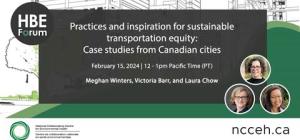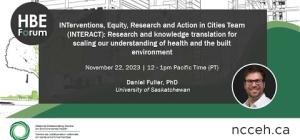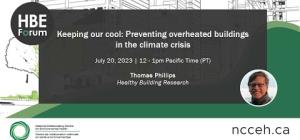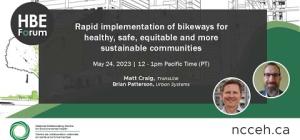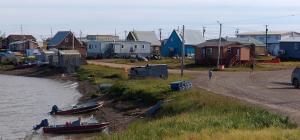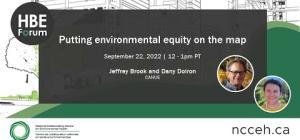
Urban rewilding and public health considerations

Introduction
Rewilding involves restoring natural ecosystems following major human disturbance to promote resilient, self-regulating and self-sustaining ecosystems. The concept originated in North America in the 1980s, and was originally focused on securing large, well-connected areas in which to release animals that were once native to the ecosystem.1 Over time, the term has moved from the academic to the public realm, and has taken on multiple meanings or “styles” as it has grown in popularity.
Urban rewilding (also sometimes referred to as micro-rewilding) is a specific style of rewilding which focuses on adapting and applying rewilding principles (Box 1) to projects in urban or suburban areas. Owing to the space constraints of urban environments and the proximity to dense population centres, most urban rewilding projects do not involve the intentional reintroduction of larger animal species. Insects, small animals, and birds, however, may be introduced or often will return on their own following efforts to rewild a space. While much of urban rewilding follows a passive approach, often some level of human intervention is needed to recover land that has been fundamentally changed by and for human use.2
|
Box 1: Principles for successful urban rewilding |
|
Adapted from Urban rewilding: the value of co-benefits of nature in urban spaces. C40 Cities Climate Leadership Group, Arup, 2023.
Examples of urban rewilding projects might include reintroducing native flora and fauna to an empty lot or a private garden or allowing nature in a park to grow without maintenance or human-intervention. While the scale and initial starting point of urban rewilding projects may differ, they can be essentially thought of as changing an area from a less “wild” state to one that is “wilder,” effectively increasing nature’s autonomy.3 Approaches may be entirely hands-off (e.g., land abandonment) or alternatively call for some early-stage human management to facilitate the emergence of ecological and ecosystem processes that cannot be recovered without intervention (e.g., reintroduction of native species, removal of fencing, removal of levees or other “hard engineering” river management practices). The end goal, however, is to reach a state of passive management, allowing nature’s dynamic processes to shape the future state of the ecosystem.4
Prominent Canadian examples of urban rewilding include Parc Jean-Drapeau in Montreal and Corktown Common in Toronto. The rewilding of Parc Jean-Drapeau in Montreal is a relatively recent initiative, beginning in 2021 in response to both the climate emergency and the coronavirus pandemic, two crises that have highlighted the importance of public parks for mental and physical well-being.5 The project, still in the works, has involved revitalizing the park which had become run-down after years of poor maintenance and underfunding. The project to date has involved setting up a biodiversity corridor and converting several parking lots and grassy areas into native flower meadows, among other rewilding efforts. Corktown Common, on the other hand, is the result of a 2013 rewilding project that involved remediating flood-prone industrial lands through the re-introduction of flood-protective native ecosystems, such as marshland, mixed forest, and meadows.6 The park now uses organic landscape management to upkeep the park, a strategy that essentially allows nature itself to lead and become self-sustaining.7
As the world faces looming biodiversity and climate crises, urban rewilding is being touted as a possible intervention cities can take to begin to address these issues.8,9 With the well-established benefits of greenspace on human health, there is also growing momentum to safeguard nature in cities and restore sites that have been greatly altered from their natural or “wild” state.10 However, given the close proximity of dense population centres to these urban rewilding initiatives compared to those that occur in more rural areas, it is important to consider the ways in which it might impact human health, so that benefits and risks can be appropriately managed.
This evidence brief provides an overview of the health impacts of urban rewilding, and aims to provide environmental public health professionals with the knowledge necessary to evaluate, advocate for, and provide input on the human health component of urban rewilding projects.
Methodology
Literature search
The literature search was developed to answer the following research questions:
- What are the health benefits of urban rewilded spaces?
- What are the health risks of urban rewilded spaces?
- What knowledge gaps exist regarding the health impacts of urban rewilded spaces?
- What factors should environmental public health professionals consider when evaluating urban rewilding proposals or plans?
A rapid literature search was performed to identify evidence of individual and population-level health benefits and risks associated with rewilding in urban or suburban areas. EBSCOhost databases (including Medline, CINAHL, Academic Search Complete, and ERIC), Google Scholar and Google were scanned for English language results with no date limit and no jurisdictional limit. Variants and Boolean operator combination of key search terms were used (a full list of search terms is available upon request). Additional references were added via forward and backward chaining of those search results and supplemental searches, as necessary. Retrieved papers were assessed by a single reviewer and the results were synthesized narratively. The synthesis was subject to internal and external review.
Results
What are the health benefits of rewilded urban spaces?
Urban greenspaces (e.g., forests, parks, and residential and community gardens, etc.) are associated with many health benefits that can be classified under three domains as proposed by Markevych et al. (2017): reducing harms, restoring capacities, and building capacities (Figure 1).11 Urban rewilding initiatives have the potential to contribute substantially to human health at both the individual and population levels through many of these mechanisms.12
Figure 1. Potential pathways linking greenspace to positive health outcomes

Figure adapted from Markevych et al. 2017.11
Some greenspaces are better than others in terms of their capacity to improve human health. For example, street trees may help reduce air and noise pollution but are less likely to facilitate social cohesion. Parks on the other hand often do both. Similarly, rewilded spaces often can provide more health benefits than more curated urban greenspaces (e.g., lawns, ornamental greenery, tended gardens), owing to characteristics such as increased biodiversity, perceived “wildness,” and ecological integrity, which can help with psychological restoration and stress recovery (see Box 2 for a glossary of key terms).
|
Box 2: Glossary of key terms |
|
Biodiversity describes “the variability within and among, as well as the variability at other levels of organization, such as between ecosystems and landscapes.”13 Ecological integrity describes an ecosystem where the composition and function of the ecosystem are unimpaired by human activity. Natural ecological processes are intact and self-sustaining, and the ecosystem’s capacity for self-renewal is maintained.14,15 Ecosystem services are positive benefits that ecosystems provide to people and include four main types:
Perceived “wildness” is a subjective measure of how “wild” or “natural” a place is. Different studies use different methods to assess this measure. |
For example, greenspaces with greater biodiversity tend to have more diverse environmental microbiomes (e.g., the community of bacteria, fungi, and viruses in a given environment), exposure to which helps shape the human microbiome, and has been linked to enhanced immune regulation and consequently protection from allergic and autoimmune diseases.16-18 Increased biodiversity also supports ecosystem services, including protection from soil erosion and climate extremes, water purification, and aesthetic enjoyment, among others.19,20 And while mental health is not (yet) considered an ecosystem service,21 both biodiversity and the degree to which environments are perceived as “wild” or “natural” have been found to be positively correlated with a number of well-being indicators, though results are somewhat mixed.22-31
Hoyle et al. (2019) found a statistically significant correlation between perceived naturalness and restorative effect (i.e., feelings of relaxation and/or escape) after inviting participants to walk through sites characterized by their degree of naturalness (i.e., strongly natural, intermediate, or strongly unnatural).30 Similarly, Mavoa et al. (2019) detected a statistically significant relationship between subjective well-being and both flora and fauna species richness, independent of other natural environment measures.26 Several other studies, using a range of methodologies, have found similar results.29,32,33 Nonetheless, some studies have found no such correlation between biodiversity and degree of naturalness to psychological restoration or other indicators of well-being.31,33 Using an experimental design, Van den Berg et al. (2014) compared the restorative impacts of four environments—an urban streetscape, a tended parkland, a tended woodland, and a wild woodland— on participants after showing them a scary movie.31 Compared to the urban streetscape, the three natural environments (i.e., the tended parkland, tended woodland, and wild woodland) were correlated with a stronger recovery in mood, vitality, and restorative state; yet when these environments were compared to each other, the authors found no significant difference. This suggests that the degree of naturalness may matter less than the presence of greenspace itself. Additionally, a few studies have found that wildness that takes the form of very dense vegetation may compromise psychological well-being by being seen as probable settings for physical or sexual assault and other crimes.34,35 These divergent findings highlight the need for more research.
Finally, predicting the health benefits expected from an urban rewilding project can be difficult to do as such projects often differ widely from each other in both scale and approach.36 Similarly, projects may also differ in terms of the habitat being rewilded (wetland, grassland, forest, etc.), and the degree of degradation to the ecosystem prior to beginning the project. For example, rewilding a meadow ecosystem would result in different health benefits than rewilding a forest ecosystem, owing to the different ecosystem services these habitats provide. Similarly, rewilding a highly degraded landscape would in theory result in greater health benefits than rewilding a public park, which would have already provided some greenspace health benefits. The other difficulty in evaluating the health benefits of urban rewilding projects is the relative lack of empirical research on the subject.37-39 While much is known about the health benefits that urban greenspace provides, it is less clear if and how the biodiversity or “wildness” of that greenspace enhances these health benefits, particularly as it relates to mental health. This leaves a gap in understanding as to how biodiverse or wild a space needs to be to generate health benefits. More research is needed to discern which qualities of wild or rewilded areas promote health and well-being.
What are the health risks of rewilded urban spaces?
Like health benefits, the health risks of rewilding are also dependent on project scale and approach, the habitat being rewilded, and the degree of degradation to the ecosystem prior to beginning the project. There is similarly a lack of empirical evidence tying rewilding initiatives to these risks. Potential risks that have been suggested are based mostly on hypothetical scenarios, taking into account the approaches that might be involved in the rewilding process.
These potential risks of urban rewilding projects can be categorized as either direct or indirect. Direct risks include increased transmission of tick- and mosquito-borne diseases; the increased risk of human-wildlife conflict; and worsened symptoms in those with seasonal allergies.10,40,41 For example, ticks are commonly found in wooded areas with leaf litter, along forest edges, in tall grassy areas, and within vegetated habitats under tree canopies — any of which are likely outcomes of a rewilding project, where vegetation like grasses are left to grow long or leaf litter left to naturally decompose.42 Rewilding of urban wetlands, on the other hand, may unintentionally benefit mosquitoes by creating an ideal habitat for breeding, and consequently increase the risk of mosquito-borne disease transmission settings.43 Regarding potential for human-wildlife conflict, risks could include increased wildlife-vehicle collisions, property damage, and/or physical attacks to people or their pets.3
Many of these risks can be mitigated through considered design and planning. For example, there are a number of landscape management strategies that can minimize the movement of ticks in a rewilded area, such as the use of hardscaping materials (e.g., gravel, stones, bare soil, or cedar woodchips) to create clear pathways for human movement throughout rewilded areas.44 For mosquitoes, reintroduction of natural predators is another option to reduce associated risk.45,46 A meta-analysis of 31 studies concluded mosquito larvae were significantly reduced through predation by dragonflies and other similar insects.45
Indirect risks include the risk of displacement of low-income populations from their communities as a result of green gentrification, as well as the inverse risk of perpetuating inequities by concentrating projects, and subsequently health benefits, in the wealthier parts of cities.47,48 The New York City High Line is an example of a successful urban rewilding project that turned an abandoned railway into a rewilded elevated walkway. Noted health benefits include reduced air and noise pollution for pedestrians, among others.49 However, the transformation also resulted in the gentrification of the neighbourhood, raising adjacent housing values by 35% and displacing low-income residents from this community.50 These indirect risks are often more complicated to address. Nonetheless, there exist a number of strategies aimed at developing greenspaces that resist subsequent gentrification and displacement.51
For example, rent control and anti-eviction protections (e.g., the right to counsel) in communities at risk of green gentrification can be used to enable renters to continue living in their existing rental unit.51 Similarly, for current or prospective low-income homeowners near the greenspace, property tax freezes and financial supports such as down-payment assistance can be implemented to ensure homeownership remains financially feasible for low-income residents.51 Non-profit organizations can also create community land trusts, which are a model of affordable housing that serves to acquire and hold land in the interest of the local community.52 Other anti-gentrification and anti-displacement strategies may be targeted towards private sector housing developers, small businesses, and public funding agencies. Regardless of the strategy chosen, it is essential that strategies be implemented at the early stage of greenspace planning and development, and that communities be engaged in the process throughout.51
Finally, it is also important to note that while the concept of rewilding is aligned with many Indigenous philosophies and practices,53 the rewilding movement has historically excluded Indigenous people. In doing so, rewilding projects often miss out on a significant opportunity to learn from Indigenous leaders about local land history and ecology and improve project outcomes. More importantly, rewilding projects that exclude Indigenous collaboration diminish the likelihood of creating an urban area that would allow Indigenous peoples to reconnect with the land or engage in environmental healing. To address this harm, the rewilding movement must take into account the interests, knowledge, and needs of Indigenous communities, encouraging Indigenous-led rewilding projects and collaboration with local Indigenous communities.
What factors should environmental public health professionals consider in planning and evaluating urban rewilding initiatives?
In many cases, the health benefits of urban rewilding will far outweigh the risks. Nonetheless, careful planning and risk mitigation can help to ensure that benefits are maximized, while risks minimized. This will involve breaking down the silos between urban planning, environmental conservation, and public health. In particular, environmental public health professionals could advocate for involvement during the planning and implementation process of urban rewilding initiatives, evaluating a project’s health-related impacts and recommending potential mitigation strategies to potential health risks.
Some key public health considerations during the planning and implementation processes include:
- The site’s current health risks and benefits (pre-rewilding).
- The location of the site, including proximity to people and/or homes and businesses, as well as the expected number of visitors to the area.
- The rewilding approaches being proposed, and the health risks they may pose. For example, if there is a proposed animal reintroduction, what might be the human health risks of this (if any)?
- Whose voices have been included in the consultation process and whose voices are missing.
- Considerations of how people are likely to interact with the rewilded site in the future.
- As rewilding is a dynamic process, consideration of the predicted health benefits and risks of the project over time.
Evaluation of urban rewilding initiatives is necessary to improve understanding of both the benefits and harms of these kinds of projects. It is important that evaluations 1) be planned from the outset, including baseline data collection for pre-post rewilding comparisons, 2) account for both the slow progression of changes over time and the dynamic nature of rewilded spaces, including seasonal changes and climate change, and 3) consider the equity effects and impacts for specific sub-populations.54
Summary
Urban rewilding is a style of rewilding focused on adapting and applying certain rewilding principles to projects in urban or suburban areas. As greenspaces, urban rewilding projects are likely to result in numerous health benefits for those interacting with or living near to the site, such as reducing air pollution and noise, restoring psychological capacities, and encouraging social cohesion and physical activity. Rewilded sites may also contribute to added health benefits that other urban greenspaces (e.g., parks, tree-lined streets) do not, owing to their increased biodiversity and perceived “wildness.” More research, however, is needed to better understand how these characteristics improve human health and how much (e.g., what degree of biodiversity or perceived wildness) is necessary to achieve these benefits. Furthermore, studies that examine the health impacts pre- and post-urban rewilding would help better inform our understanding of these initiatives. As for health risks, the evidence remains thin. Nonetheless, precautionary measures such as those mentioned in this review can and should be implemented at the outset of urban rewilding projects to mitigate known risks where possible.
Acknowledgements
The author would like to thank NCCEH staff Dr. Lydia Ma and Michele Wiens for their work on this document as well as Dr. David Galbraith, Royal Botanical Gardens Canada, for reviewing this paper.
References
- Soulé ME, Noss R. Rewilding and biodiversity: complementary goals for continental conservation. Wild Earth. 1998;8:18-28.
- C40 Cities Knowledge Hub. Urban rewilding: the value and co-benefits of nature in urban spaces: C40 Cities; 2023 Apr. Available from: https://www.c40knowledgehub.org/s/article/Urban-rewilding-the-value-and-co-benefits-of-nature-in-urban-spaces?language=en_US.
- Pettorelli N, Bühne HSt, Cunningham AA, Dancer A, Debney A, Durant SM, et al. Rewilding our cities: attributes. London, UK: ZSL report; 2022. Available from: https://cms.zsl.org/sites/default/files/2023-02/ZSL%20Rewilding%20our%20cities%20report.pdf.
- Jepson P, Schepers F. Making space for rewilding: creating an enabling policy enviornment [policy brief]. Nijmegen, The Netherlands: Rewilding Europe, University of Oxford; 2016. Available from: https://www.rewildingeurope.com/wp-content/uploads/2016/05/Making-Space-for-Rewilding-Policy-Brief1.pdf.
- Cha J. La réinvention du parc Jean-Drapeau : un nouveau parc plus accessible, diversifié, public, et vert. NY: The Nature of Cities; 2021 Oct 18. Available from: https://www.thenatureofcities.com/2021/10/18/la-reinvention-du-parc-jean-drapeau-un-nouveau-parc-plus-accessible-diversifie-public-et-vert/#.
- Bialek C. Rewilding the city. Toronto, ON: WATERFRONToronto; 2022 [updated Aug 31]; Available from: https://www.waterfrontoronto.ca/news/rewilding-city.
- WATERFRONToronto. Design, vision and maintenance for waterfront wilderness: Corktown common plantings webinar. Toronto, ON: WATERFRONToronto; 2022. Available from: https://www.youtube.com/watch?v=MsWL4sXK5pQ.
- Carver S, Convery I, Hawkins S, Beyers R, Eagle A, Kun Z, et al. Guiding principles for rewilding. Conserv Biol. 2021;35(6):1882-93. Available from: https://conbio.onlinelibrary.wiley.com/doi/abs/10.1111/cobi.13730.
- Lehmann S. Growing biodiverse urban futures: renaturalization and rewilding as strategies to strengthen urban resilience. Sustainability. 2021;13(5):2932. Available from: https://doi.org/10.3390/su13052932.
- Maller C, Mumaw L, Cooke B. Health and social benefits of living with ‘wild’ nature. In: du Toit JT, Pettorelli N, Durant SM, editors. Rewilding. Cambridge: Cambridge University Press; 2019. p. 165-81. Available from: https://www.cambridge.org/core/books/rewilding/health-and-social-benefits-of-living-with-wild-nature/46C19D0EA92DAFC63B24D7219114510C.
- Markevych I, Schoierer J, Hartig T, Chudnovsky A, Hystad P, Dzhambov AM, et al. Exploring pathways linking greenspace to health: theoretical and methodological guidance. Environ Res. 2017 Oct 1;158:301-17. Available from: https://doi.org/10.1016/j.envres.2017.06.028.
- Aronson JC, Blatt CM, Aronson TB. Restoring ecosystem health to improve human health and well-being: physicians and restoration ecologists unite in a common cause. Ecol Soc. 2016;21(4). Available from: https://www.ecologyandsociety.org/vol21/iss4/art39/.
- Balvanera P, Siddique I, Dee L, Paquette A, Isbell F, Gonzalez A, et al. Linking biodiversity and ecosystem services: current uncertainties and the necessary next steps. Bioscience. 2013;64(1):49-57. Available from: https://doi.org/10.1093/biosci/bit003.
- Parks Canada. Parks Canada guide to management planning. Gatineau, QC: Parks Canada; 2008. Available from: https://parks.canada.ca/pn-np/nt/aulavik/gestion-management/~/media/FE8BE818E4034E1B8FFB2D1AC3809812.ashx.
- Parrish JD, Braun DP, Unnasch RS. Are we conserving what we say we are? Measuring ecological integrity within protected areas. Bioscience. 2003;53(9):851-60. Available from: https://doi.org/10.1641/0006-3568(2003)0532.0.CO;2.
- Roslund MI, Puhakka R, Grönroos M, Nurminen N, Oikarinen S, Gazali AM, et al. Biodiversity intervention enhances immune regulation and health-associated commensal microbiota among daycare children. Sci Adv. 2020;6(42):eaba2578. Available from: https://doi.org/10.1126/sciadv.aba2578.
- Ege MJ, Mayer M, Normand A-C, Genuneit J, Cookson WOCM, Braun-Fahrländer C, et al. Exposure to environmental microorganisms and childhood asthma. N Engl J Med. 2011;364(8):701-9. Available from: https://www.nejm.org/doi/full/10.1056/NEJMoa1007302.
- Heederik D, von Mutius E. Does diversity of environmental microbial exposure matter for the occurrence of allergy and asthma? J Allergy Clin Immunol. 2012 Jul 1;130(1):44-50. Available from: https://doi.org/10.1016/j.jaci.2012.01.067.
- Harrison PA, Berry PM, Simpson G, Haslett JR, Blicharska M, Bucur M, et al. Linkages between biodiversity attributes and ecosystem services: a systematic review. Ecosyst Serv. 2014 Sep 1;9:191-203. Available from: https://doi.org/10.1016/j.ecoser.2014.05.006.
- Isbell F, Craven D, Connolly J, Loreau M, Schmid B, Beierkuhnlein C, et al. Biodiversity increases the resistance of ecosystem productivity to climate extremes. Nature. 2015 Oct 1;526(7574):574-7. Available from: https://doi.org/10.1038/nature15374.
- Bratman GN, Anderson CB, Berman MG, Cochran B, de Vries S, Flanders J, et al. Nature and mental health: an ecosystem service perspective. Sci Adv. 2019;5(7):eaax0903. Available from: https://doi.org/10.1126/sciadv.aax0903.
- Schebella MF, Weber D, Schultz L, Weinstein P. The wellbeing benefits associated with perceived and measured biodiversity in Australian urban green spaces. Sustainability. 2019;11(3):802. Available from: https://doi.org/10.3390/su11030802.
- Carrus G, Scopelliti M, Lafortezza R, Colangelo G, Ferrini F, Salbitano F, et al. Go greener, feel better? The positive effects of biodiversity on the well-being of individuals visiting urban and peri-urban green areas. Landscape Urb Plan. 2015 Feb 1;134:221-8. Available from: https://doi.org/10.1016/j.landurbplan.2014.10.022.
- Wood E, Harsant A, Dallimer M, Cronin de Chavez A, McEachan RRC, Hassall C. Not all green space is created equal: biodiversity predicts psychological restorative benefits from urban green space. Front Psychol. 2018 Nov 27;9. Available from: https://doi.org/10.3389/fpsyg.2018.02320.
- Beute F, Andreucci MB, Lammel A, Davies Z, Glanville J, Keune H, et al. Types and characteristics of urban and peri-urban green spaces having an impact on human mental health and wellbeing: a systematic review: EKLIPSE Expert Working Group, Horizon 2020; 2020. Available from: https://eklipse.eu/wp-content/uploads/website_db/Request/Mental_Health/EKLIPSE_HealthReport-Green_Final-v2-Digital.pdf.
- Mavoa S, Davern M, Breed M, Hahs A. Higher levels of greenness and biodiversity associate with greater subjective wellbeing in adults living in Melbourne, Australia. Health Place. 2019 May 1;57:321-9. Available from: https://doi.org/10.1016/j.healthplace.2019.05.006.
- Liu Q, Zhang Y, Lin Y, You D, Zhang W, Huang Q, et al. The relationship between self-rated naturalness of university green space and students’ restoration and health. Urban For Urban Green. 2018 Aug 1;34:259-68. Available from: https://doi.org/10.1016/j.ufug.2018.07.008.
- Samus A, Freeman C, van Heezik Y, Krumme K, Dickinson KJM. How do urban green spaces increase well-being? The role of perceived wildness and nature connectedness. J Environ Psychol. 2022 Aug 1;82:101850. Available from: https://doi.org/10.1016/j.jenvp.2022.101850.
- Carrus G, Lafortezza R, Colangelo G, Dentamaro I, Scopelliti M, Sanesi G. Relations between naturalness and perceived restorativeness of different urban green spaces. PsyEcology. 2013 Jan 1;4(3):227-44. Available from: https://doi.org/10.1174/217119713807749869.
- Hoyle H, Jorgensen A, Hitchmough JD. What determines how we see nature? Perceptions of naturalness in designed urban green spaces. People and Nature. 2019;1(2):167-80. Available from: https://doi.org/10.1002/pan3.19.
- Van den Berg AE, Jorgensen A, Wilson ER. Evaluating restoration in urban green spaces: Does setting type make a difference? Landscape Urb Plan. 2014 Jul 1;127:173-81. Available from: https://doi.org/10.1016/j.landurbplan.2014.04.012.
- Jiang B, Li D, Larsen L, Sullivan WC. A dose-response curve describing the relationship between urban tree cover density and self-reported stress recovery. Environ Behav. 2016;48(4):607-29. Available from: https://psycnet.apa.org/doi/10.1177/0013916514552321.
- Beil K, Hanes D. The influence of urban natural and built environments on physiological and psychological measures of stress— a pilot study. Int J Environ Res Public Health. 2013;10(4):1250-67. Available from: https://www.mdpi.com/1660-4601/10/4/1250.
- Jorgensen A, Anthopoulou A. Enjoyment and fear in urban woodlands – Does age make a difference? Urban For Urban Green. 2007 Nov 15;6(4):267-78. Available from: https://doi.org/10.1016/j.ufug.2007.05.004.
- Jorgensen A, Hitchmough J, Dunnett N. Woodland as a setting for housing-appreciation and fear and the contribution to residential satisfaction and place identity in Warrington New Town, UK. Landscape Urb Plan. 2007 Mar 2;79(3):273-87. Available from: https://doi.org/10.1016/j.landurbplan.2006.02.015.
- Bradby K, Wallace KJ, Cross AT, Flies EJ, Witehira C, Keesing A, et al. Four Islands EcoHealth Network: an Australasian initiative building synergies between the restoration of ecosystems and human health. Restor Ecol. 2021;29(4):e13382. Available from: https://doi.org/10.1111/rec.13382.
- Breed MF, Cross AT, Wallace K, Bradby K, Flies E, Goodwin N, et al. Ecosystem restoration: a public health intervention. Ecohealth. 2021;18(3):269-71. Available from: https://doi.org/10.1007%2Fs10393-020-01480-1.
- Jorgensen A, Gobster PH. Shades of green: measuring the ecology of urban green space in the context of human health and well-being. Nat Cult. 2010;5(3):338-63. Available from: http://dx.doi.org/10.3167/nc.2010.050307.
- Lorimer J, Sandom C, Jepson P, Doughty C, Barua M, Kirby KJ. Rewilding: science, practice, and politics. Ann Rev Environ Resourc. 2015;40(1):39-62. Available from: https://www.annualreviews.org/doi/abs/10.1146/annurev-environ-102014-021406.
- Lyytimäki J, Petersen LK, Normander B, Bezák P. Nature as a nuisance? Ecosystem services and disservices to urban lifestyle. Environ Sci. 2008 Sep 1;5(3):161-72. Available from: https://doi.org/10.1080/15693430802055524.
- Speldewinde PC, Slaney D, Weinstein P. Is restoring an ecosystem good for your health? Sci Total Environ. 2015 Jan 1;502:276-9. Available from: https://doi.org/10.1016/j.scitotenv.2014.09.028.
- Elmieh N. The impacts of climate and land use change on tick-related risks [evidence review]. Vancouver, BC: National Collaborating Centre for Environmental Health; 2022 Nov 23. Available from: https://ncceh.ca/documents/evidence-review/impacts-climate-and-land-use-change-tick-related-risks.
- Lawler SP, Reimer L, Thiemann T, Fritz J, Parise K, Feliz D, Elnaiem D-E. Effects of vegetation control on mosquitoes in seasonal freshwater wetlands. J Am Mosq Control Assoc. 2007;23(1):66-70, 5. Available from: https://doi.org/10.2987/8756-971X(2007)232.0.CO;2.
- National Collaborating Centre for Environmental Health. Ticks in a changing climate [fact sheet]. Vancouver, BC: NCCEH; 2023 05 17 May 17. Available from: https://ncceh.ca/videos/ticks-changing-climate.
- Priyadarshana TS, Slade EM. A meta-analysis reveals that dragonflies and damselflies can provide effective biological control of mosquitoes. J Animal Ecol. 2023. Available from: https://doi.org/10.1111/1365-2656.13965.
- Reaser JK, Witt A, Tabor GM, Hudson PJ, Plowright RK. Ecological countermeasures for preventing zoonotic disease outbreaks: when ecological restoration is a human health imperative. Restor Ecol. 2021;29(4):e13357. Available from: https://doi.org/10.1111/rec.13357.
- Heynen N, Perkins HA, Roy P. The political ecology of uneven urban green space:the impact of political economy on race and ethnicity in producing environmental inequality in Milwaukee. Urban Aff Rev. 2006;42(1):3-25. Available from: https://doi.org/10.1177/1078087406290729.
- Brückner A, Falkenberg T, Heinzel C, Kistemann T. The regeneration of urban blue spaces: a public health intervention? reviewing the evidence. Front Public Health. 2022 Jan 13;9. Available from: https://doi.org/10.3389/fpubh.2021.782101.
- King EA, Bourdeau EP, Zheng XYK, Pilla F. A combined assessment of air and noise pollution on the High Line, New York City. Transportation Research Part D: Transport and Environment. 2016 Jan 1;42:91-103. Available from: https://doi.org/10.1016/j.trd.2015.11.003.
- Jo Black K, Richards M. Eco-gentrification and who benefits from urban green amenities: NYC’s high Line. Landscape Urb Plan. 2020 Dec 1;204:103900. Available from: https://doi.org/10.1016/j.landurbplan.2020.103900.
- Rigolon A, Christensen J. Greening without gentrification: learning from parks-related anti-displacement strategies nationwide. Los Angeles, CA: UCLA Institute of the Environment and Sustainability; 2019. Available from: https://www.ioes.ucla.edu/project/prads/.
- Davis J, Baur B, Alexander S, Bachmann B. Policy options to mitigate the impacts of green gentrification when constructing new bike paths in the madison area. J Sci Policy Governance. 2021 Sep;18(4). Available from: https://www.sciencepolicyjournal.org/article_1038126_jspg180409.html.
- International Union for Conservation of Nature. Rewilding principles. Gland, CH-Switzerland: IUCN; 2022 Oct. Available from: https://www.iucn.org/sites/default/files/2022-10/principles_of_rewilding_cem_rtg.pdf
- World Health Organization. Urban green space interventions and health: a review of impacts and effectiveness:. Copenhagen, Denmark: World Health Organization, Regional Office for Europe; 2017. Available from: https://apps.who.int/iris/bitstream/handle/10665/366036/WHO-EURO-2017-6358-46124-66715-eng.pdf?sequence=3&isAllowed=y.

